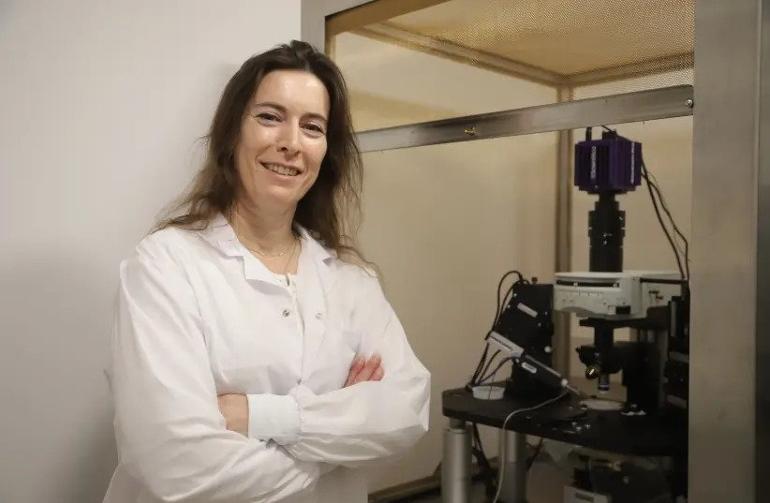Dr. Shani Stern (credit: UNIVERSITY OF HAIFA)
One of the problems in developing treatments is the fact that only 15% of Parkinson’s cases are caused by known genetic factors.
By JUDY SIEGEL-ITZKOVICH Published: SEPTEMBER 11, 2022
New research conducted at the University of Haifa has identified for the first time a number of neural processes that are common to various different types of Parkinson’s disease (PD).
As an incurable brain disorder that affects one in 500 people around the world and causes unintended or uncontrollable movements such as shaking, stiffness and difficulty with balance and coordination, PD usually presents itself gradually and worsens over time. As the disease progresses, people may have difficulty walking and talking and develop tremors in a limb, slowed movement, rigid muscles, impaired posture and balance and the loss of automatic movements. Patients usually begin developing these symptoms around age 60 and many live between 10 and 20 years after being diagnosed. Men have a higher risk of PD than women.
The processes relate to the ability of cells to connect to the extracellular matrix and their capacity to create new synopses. Thanks to the use of the innovative “Sendai Reprogramming” technique, the researchers were able to show for the first time that even in sporadic Parkinson patients for which no animal model has yet been developed, these processes are also impaired.
“Most of the current studies were undertaken on a small number of familiar Parkinson’s mutations caused by genetic factors, since it’s not possible to create models for sporadic forms of the disease,” wrote the authors in the prestigious journal NJP Parkinson’s Disease journal under the title “Reduced synaptic activity and dysregulated extracellular matrix pathways in midbrain neurons from Parkinson’s disease patients.”
The team was led by Dr. Shani Stern from the neurology department at the University of Haifa and included Prof. Irit Sagi from the Weizmann Institute of Science in Rehovot; Prof. Fred Gage from the Salk Institute in San Diego, California; Prof. Alexis Brice from the Paris Brain Institute; and Prof. Juergen Winkler from the University of Erlangen-Nuremberg in Germany.
They were able to create induced pluripotent stem cells – a type of adult somatic cells able to self-renew by dividing and developing into the three primary groups of cells that make up a human body – and genetically reprogram them to an embryonic stem (ES) cell-like state. Working on patients with “sporadic” disease that occurs irregularly, they managed to show for the first time the presence of impaired neural and cellular mechanisms in a similar manner across all the types of disease we examined,” explained Stern.
Unknown factors make treating Parkinson's difficult
Parkinson’s patients suffer from massive loss of nerve cells in the area of the brain known as the substantia nigra, which is packed with dopaminergic neurons. Dopamine is required in the process of transfer of messages between brain cells and plays a key role in one’s ability to perform motor actions properly.
ONE OF the problems in the research and development of drugs is the fact that only 15% of Parkinson’s cases are caused by known genetic factors, while 85% are defined as sporadic. As a result, it is possible only to create a model for the disease in animals relating to those 15% of the cases.
In recent years, however, a method has been developed based on the reprogramming of mature cells into induced pluripotent stem cells. According to this method, which was used in the current study, the researchers take cells from specific individuals, reprogram them into stem cells and then differentiate them as cells of a different type carrying the same genetic load of the individual from whom they were taken.
The team worked on skin cell samples taken from nine patients suffering from Parkinson’s disease. Some of the patients were diagnosed with genetic mutations while others had the sporadic disease. The skin cells were reverted to stem cells, which the researchers then differentiated into dopaminergic neurons so that the cells carried the genetic load of each specific patient and were effectively “sick” with the same type of Parkinson’s disease as that participant. The process was also used for four healthy participants constituting a control group.
In the second stage, the researchers sequenced the RNA expressed in the dopaminergic cells and prepared an electrophysiological profile of the cells, measuring electric currents and potentials in the nerve cells. The RNA sequencing enabled the researchers to understand which genes were expressed at a high level and which were less expressed relative to the control group.
The findings showed that both the patients with a genetic disease and those with a sporadic disease showed a decline in the ability of the cells to bond with the extracellular matrix through focal adhesion. The extracellular matrix is the structure between the cells that contributes to cell stability, proper development and the ability to create synapses (connections) between cells. “We know that once cells do not bond properly to the matrix, a special cell suicide mechanism called anoikis is activated,” Stern explained.
The study found additional evidence of a possible damage to the structures of the extracellular matrix – a decline in the quantity of the proteins that build the matrix, likely leading to the emergence of an unstable structure that in turn causes instability, disconnection and death in the cells. “It seems that one of the results of the decline in matrix proteins is a decline in synaptic activity and in the ability of the cells to create functional synapses,” Stern added.
Currently, most of the treatments are intended to prevent the worsening of the disease rather than to prevent it. “If we can identify the potential to develop PD at an early stage and develop treatments that can halt the advancement of the disease, we will be able to start preventative treatment at a stage when the nerve cell mortality is limited. This will allow us to significantly slow down the progression of the disease,” she concluded.
